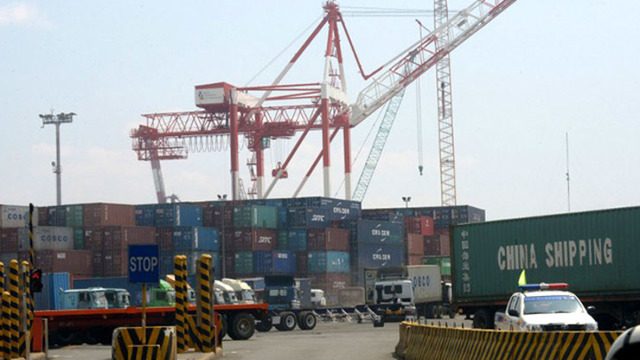SUMMARY
This is AI generated summarization, which may have errors. For context, always refer to the full article.

MANILA, Philippines – The port of Manila has returned to normal operations and congestion has been resolved, the Office of the Cabinet Secretary announced Monday, March 2.
Citing the combined efforts of the Cabinet Cluster on Port Decongestion (CCPD); the Technical Working Group of various agencies; and the cooperation from the private sector, the ships with berthing schedules were accommodated over the past 3 weeks, said Presidential Spokesperson Edwin Lacierda.
Ships that arrived unscheduled were able to dock within 24 to 60 hours from arrival. Since November 2014, more cargo has been moved at a faster rate than prior to the congestion, Lacierda said in a statement.
“By February 2015, the benefits of a fully decongested port is in place,” the statement said.
Both the Manila north International Container Terminal Services, Incorporated (ICTSI) and Asian Terminals Incorporated (ATI) have improved efficiency, from a high of 105% utilization rate during the height of the truck ban in May 2014, to the present 79% – 84% utilization rates,.
On February 22, the Philippine Ports Authority (PPA) reported that the ports of Manila are becoming less congested now, returning to normal levels despite the disruption in operations during Pope Francis’ visit in January.
Long process
Ship scheduling, loaded and empty container handling, and truck bank hours complicated the efforts to decongest the port of Manila, the statement said.
Although most of the solutions were implemented early in the last quarter of 2014, the sheer volume of the backlog needed several months to be resolved, add the long Christmas holidays, Typhoon Amang (international name: Mekkhala); and the feast of the Black Nazarene and the Pope’s visit, all constricted the movements and extended the period of resolution.
Malacañang also noted that the enhanced truck ban hours and routes have ensured efficient flow of cargo without causing traffic congestion, thus thanking the Metro Manila Development Authority (MMDA), all the local government units, and stakeholders involved for their cooperation in solving the port congestion problem.
Cargo volume up
Also, the volume of cargo shipped in and out of the seaports in the Philippines grew faster in 2014, despite the port congestion due to the truck ban imposed by the Manila city government, state-run Philippine Ports Authority (PPA) reported over the weekend.
The large exportation of river sand, magnetite sand, crude minerals, nickel ore, limestone ore, clinker and slag; coconut oil and copra; fruits and fish; as well as the sizeable importation of fuel, coal, grains, and fertilizers contributed to the increase in cargo volume, PPA said.
Philippine cargo volume went up by 4.6% to 211.2 million metric tons last year from 201.9 million metric tons (MT) in 2013 despite the congestion at ICTSI and ATI ports, PPA general manager Juan Sta. Ana said.
Last year’s volume growth was slightly faster than the 4.4% increase registered in 2013 with 201.9 million MT from 193.44 million MT in 2012.
The cargo shipped out of the Philippines grew 7.4% to 133.29 million MT in 2014 from 124.05 million MT in 2013 as imports increased by 11.3% to 67.56 million MT. Exports inched up by 3.77% to 65.73 million MT, data showed.
Cargo shipped within the Philippines though was almost flat at 77.91 million MT in 2014 from 77.86 million MT in 2013.
Container volume went up by 4% to 5.43 million twenty-foot equivalent units (TEUs) from 5.23 million TEUs, as foreign container traffic rose 3.4% to 3.29 million TEUs while domestic container traffic grew 4.9% to 2.14 million TEUs, PPA reported.
“All aspects of containerized operations went up modestly for 2014 despite the Manila port congestion and the slowdown in some areas of operations like Davao,” PPA said.
Ship calls also improved by 1.89% to 361,431 vessels in 2014 from 354,715 vessels in 2013 as domestic ship calls went up by 2.35% to 352,278, offsetting the 13.44% decline in foreign ship calls to 9,153 ships.
“Coordinated efforts from various government agencies and the private sector cushioned the adverse effect of the truck ban imposed in Manila starting February 2014,” Sta. Ana said. – Rappler.com
Add a comment
How does this make you feel?
There are no comments yet. Add your comment to start the conversation.